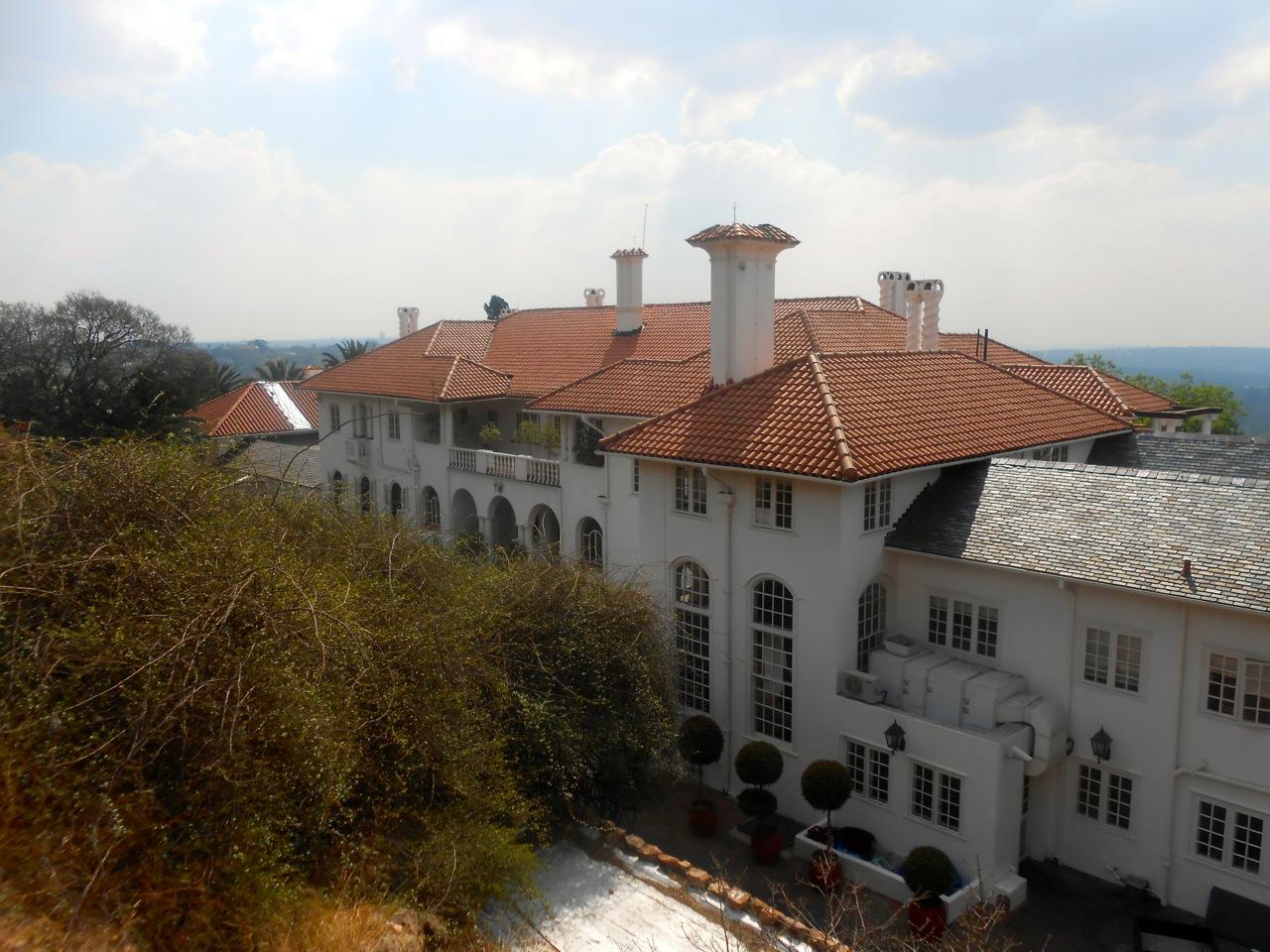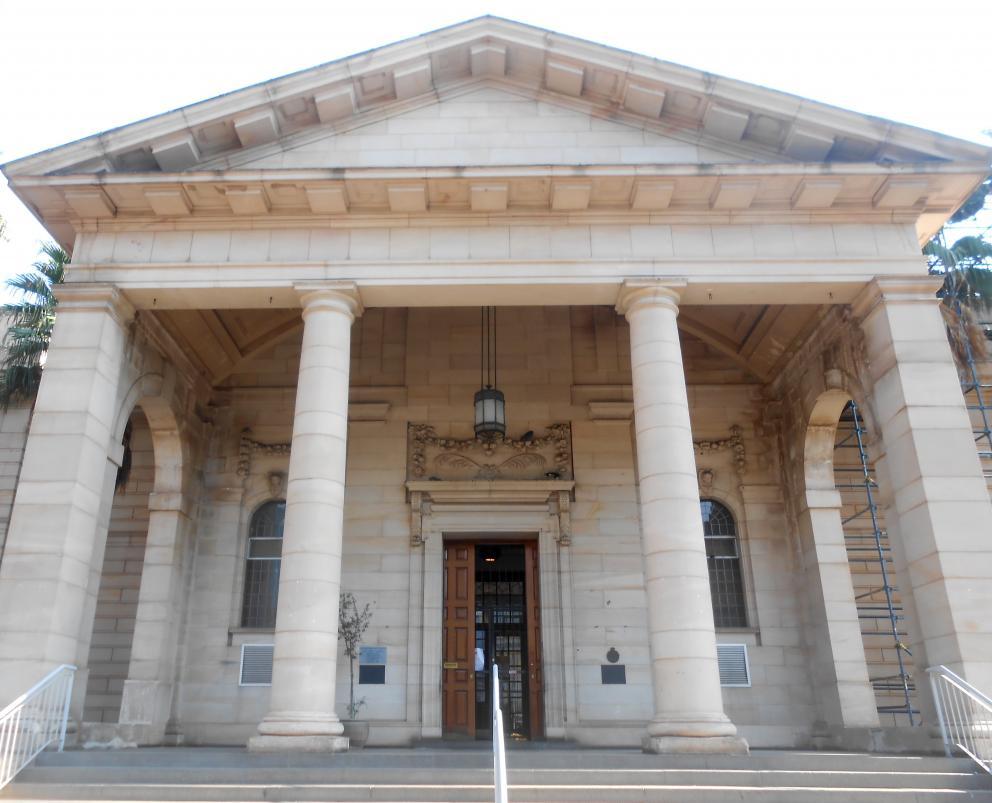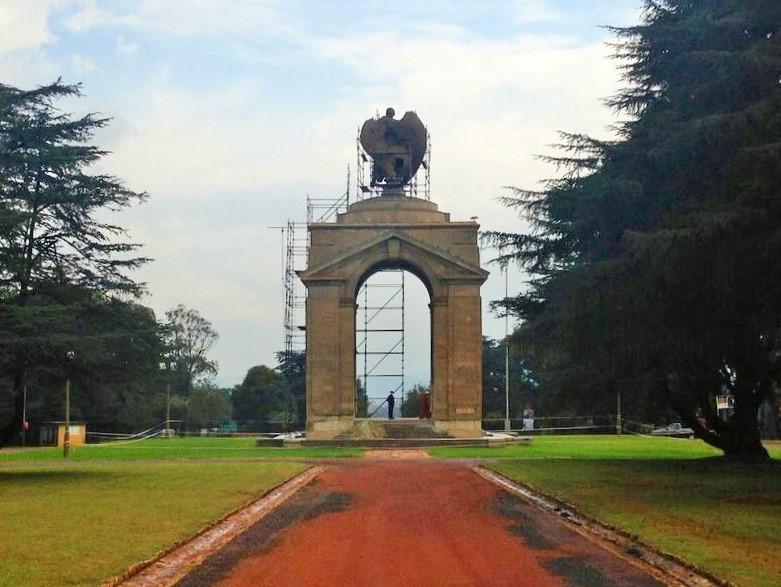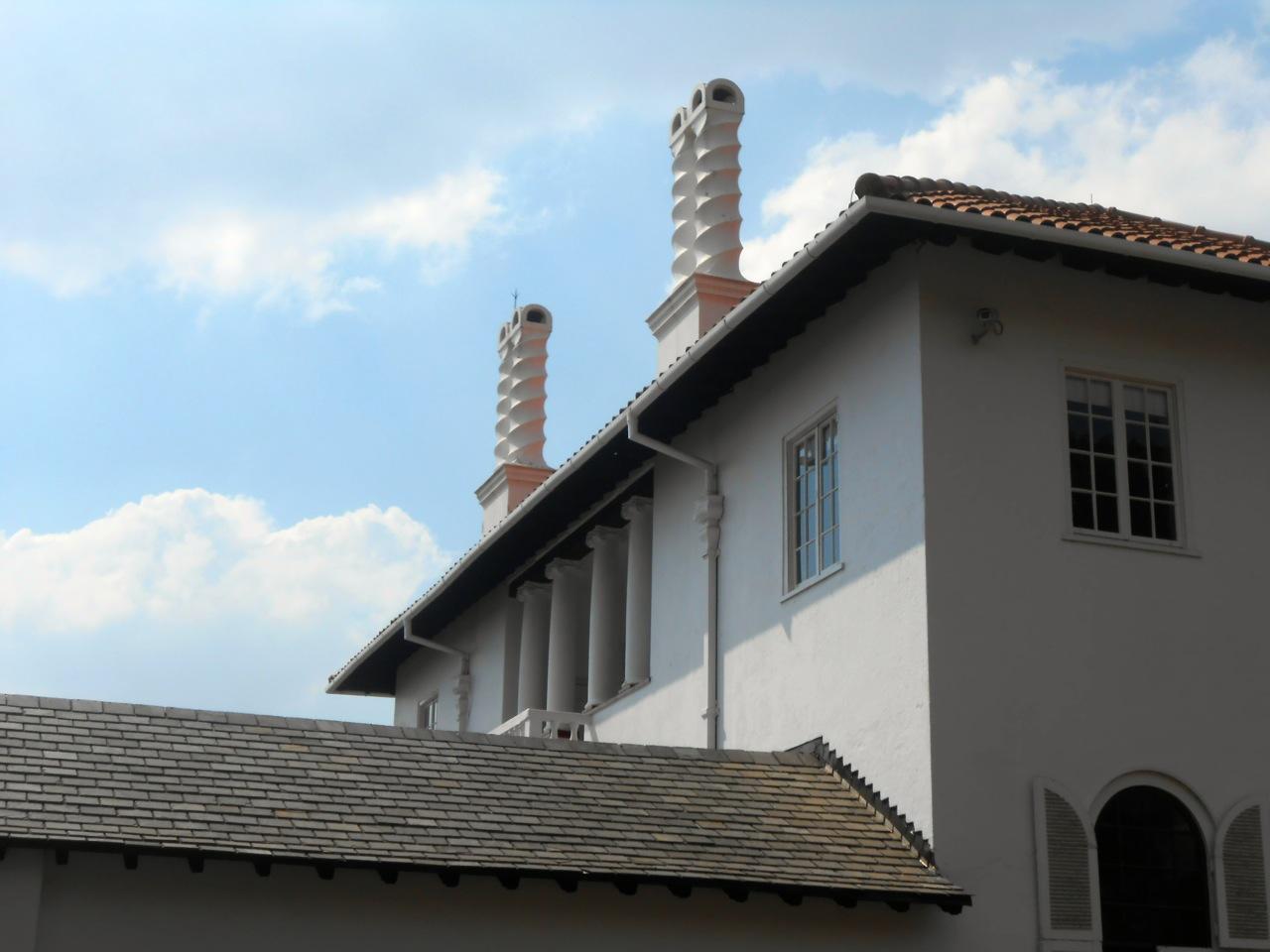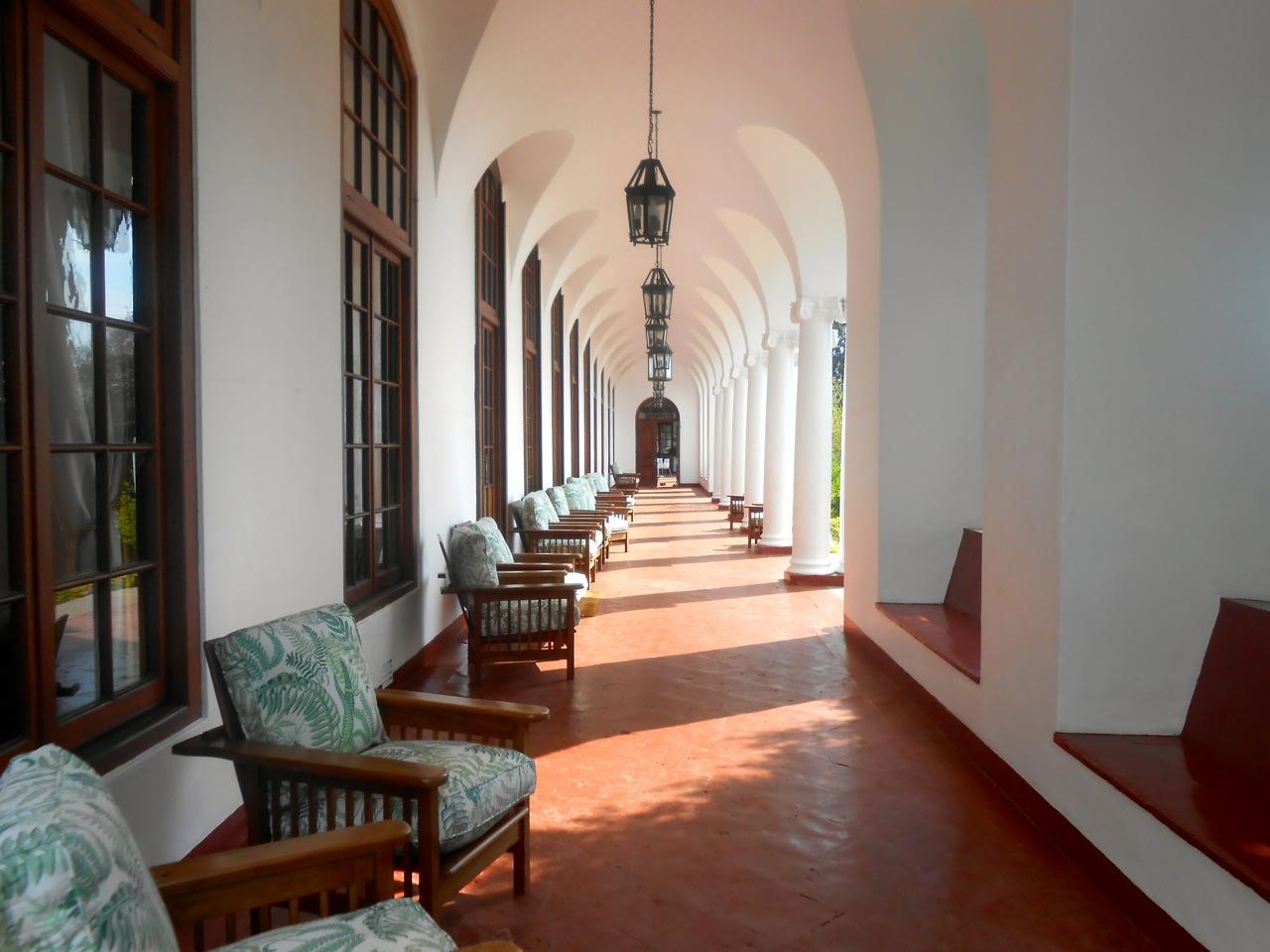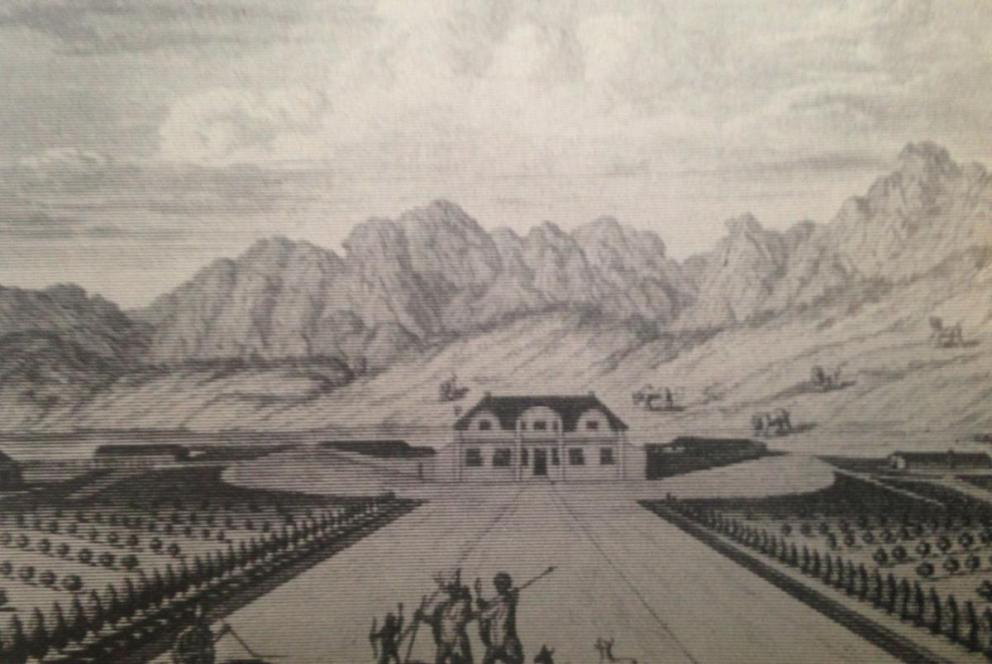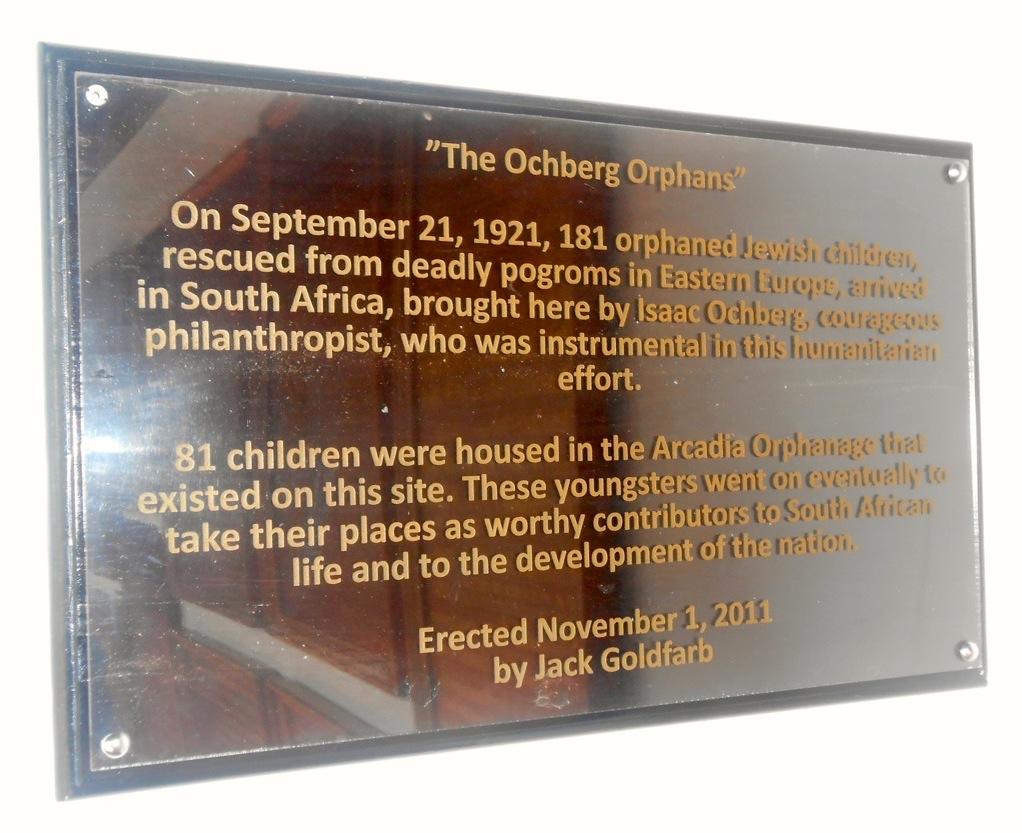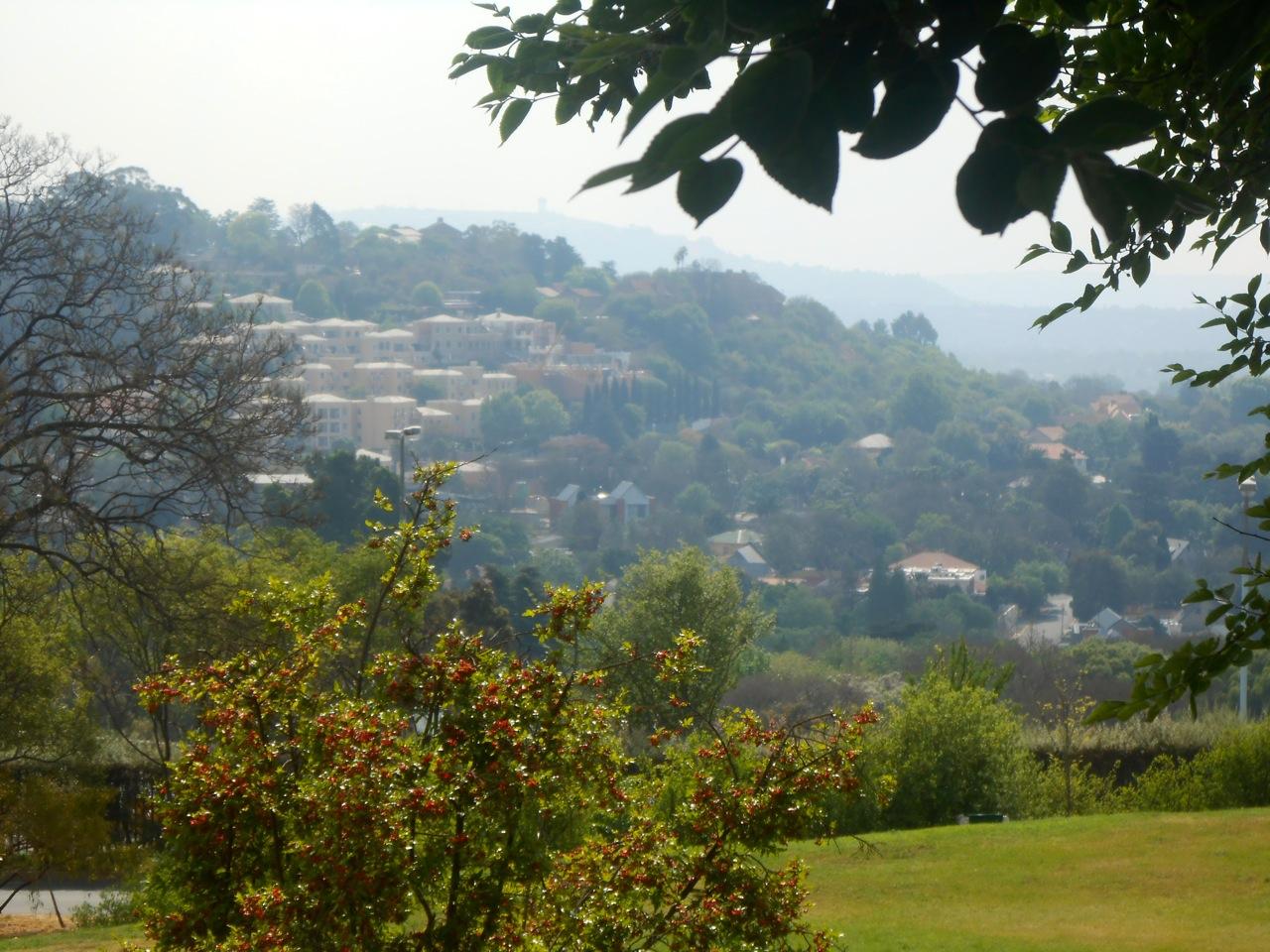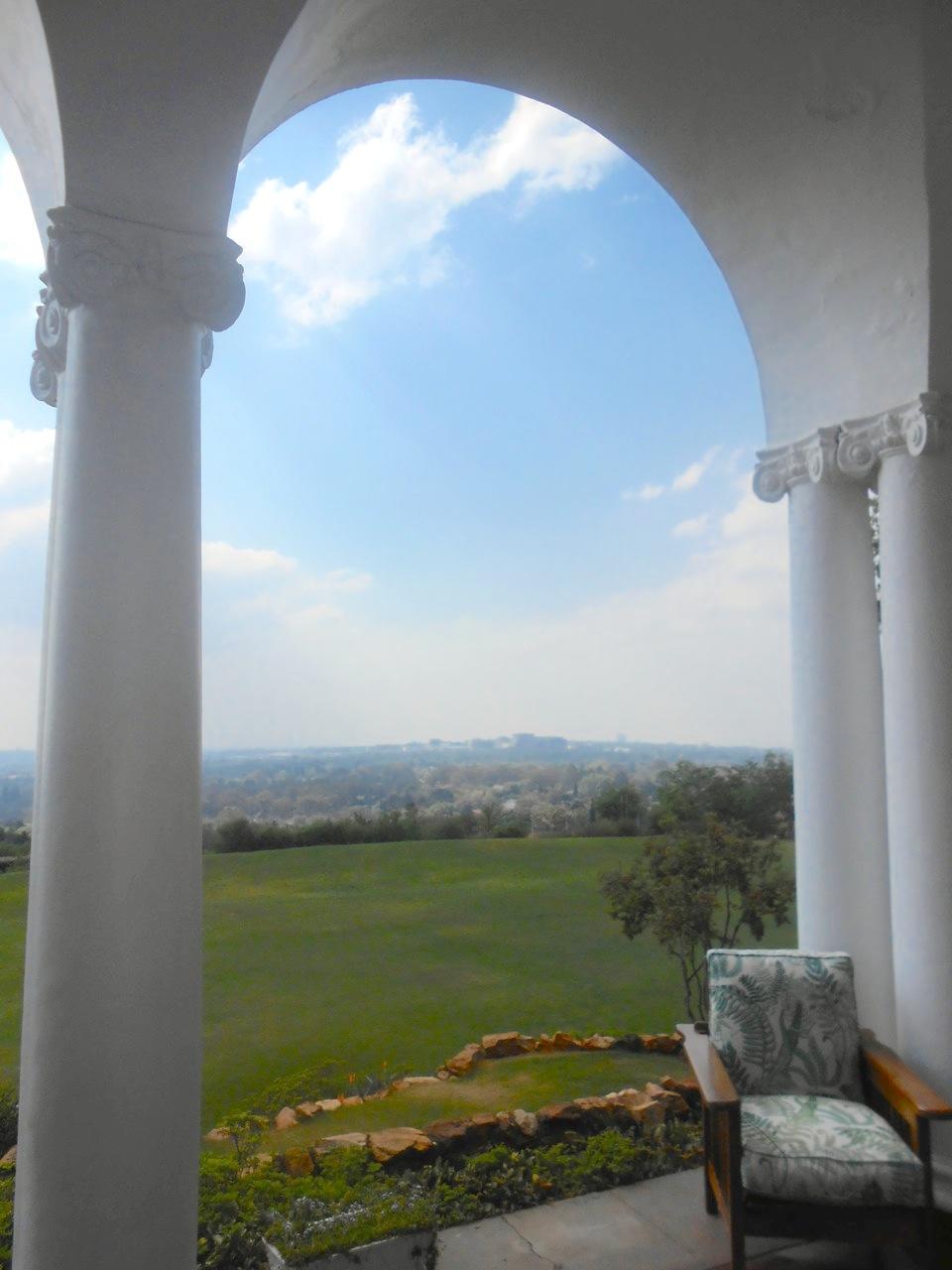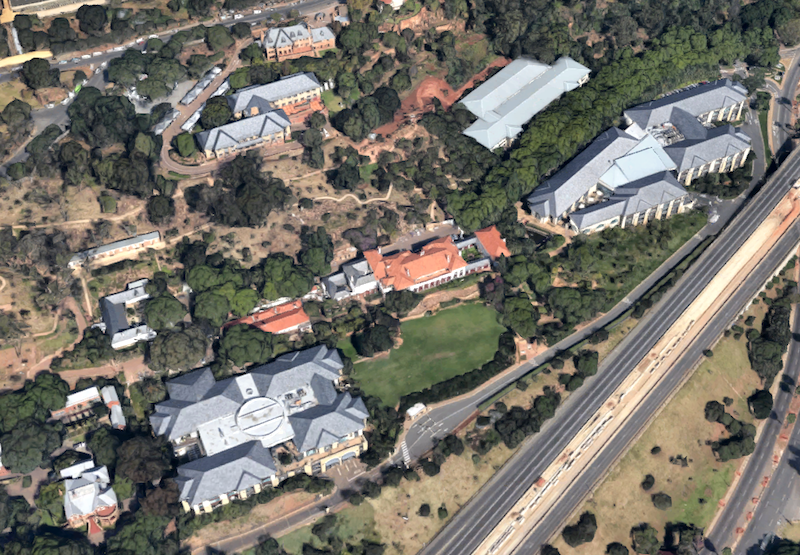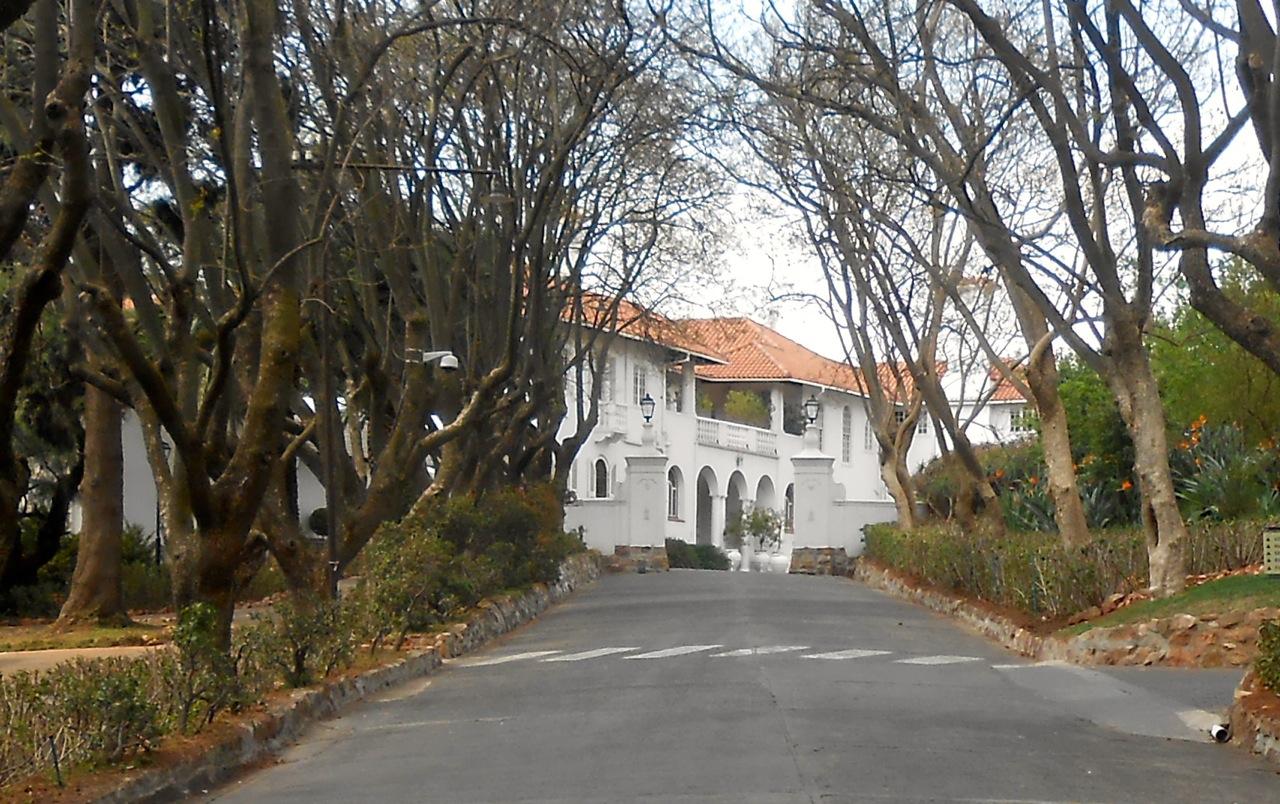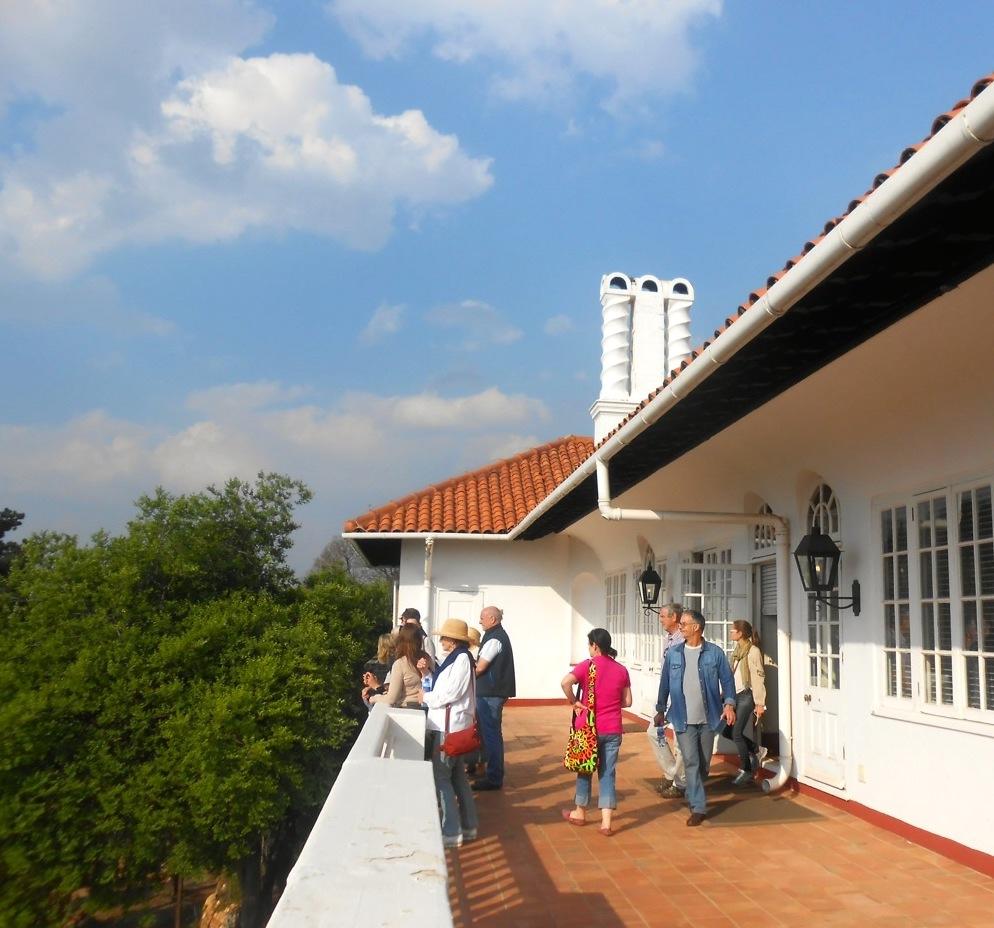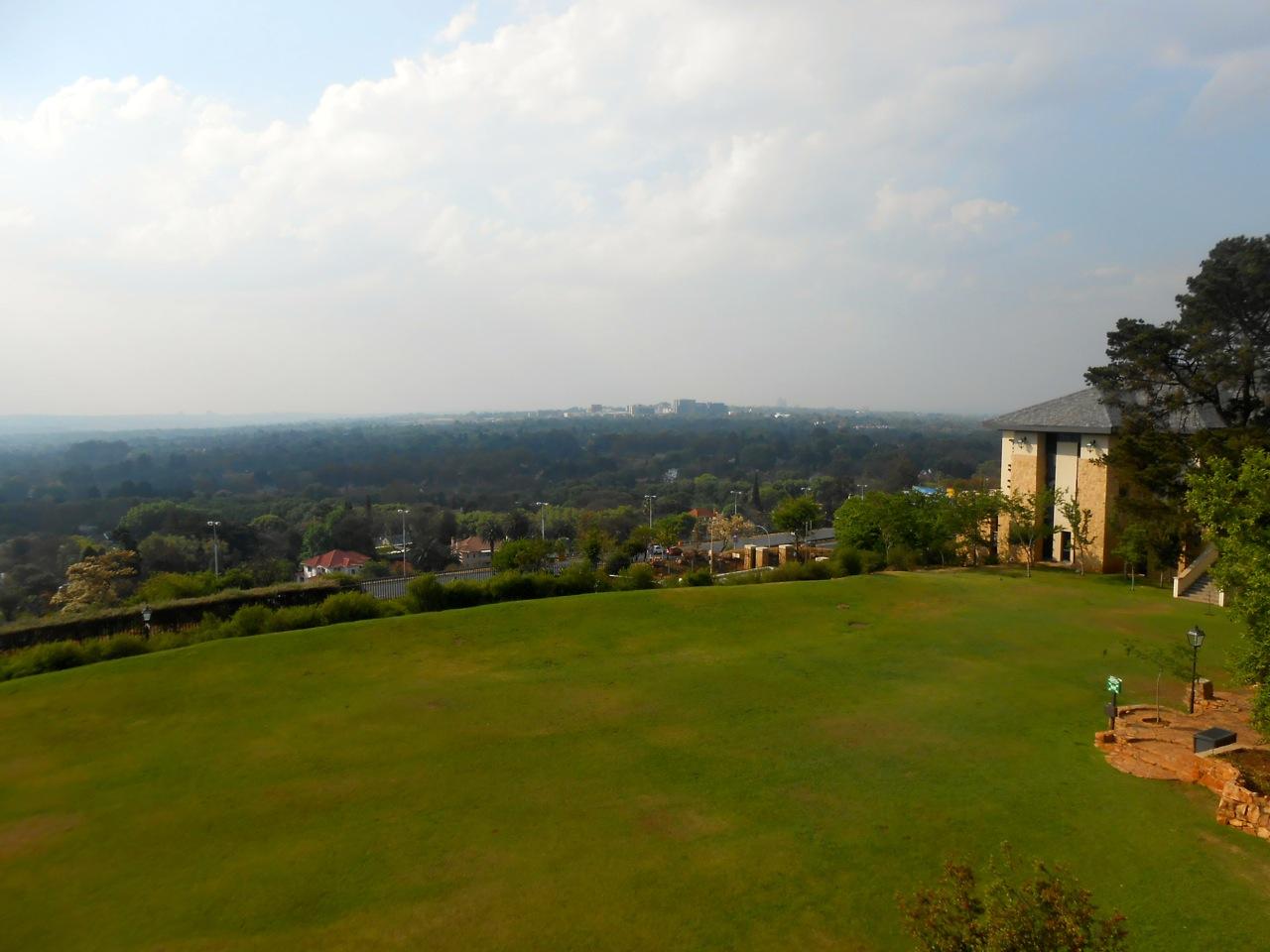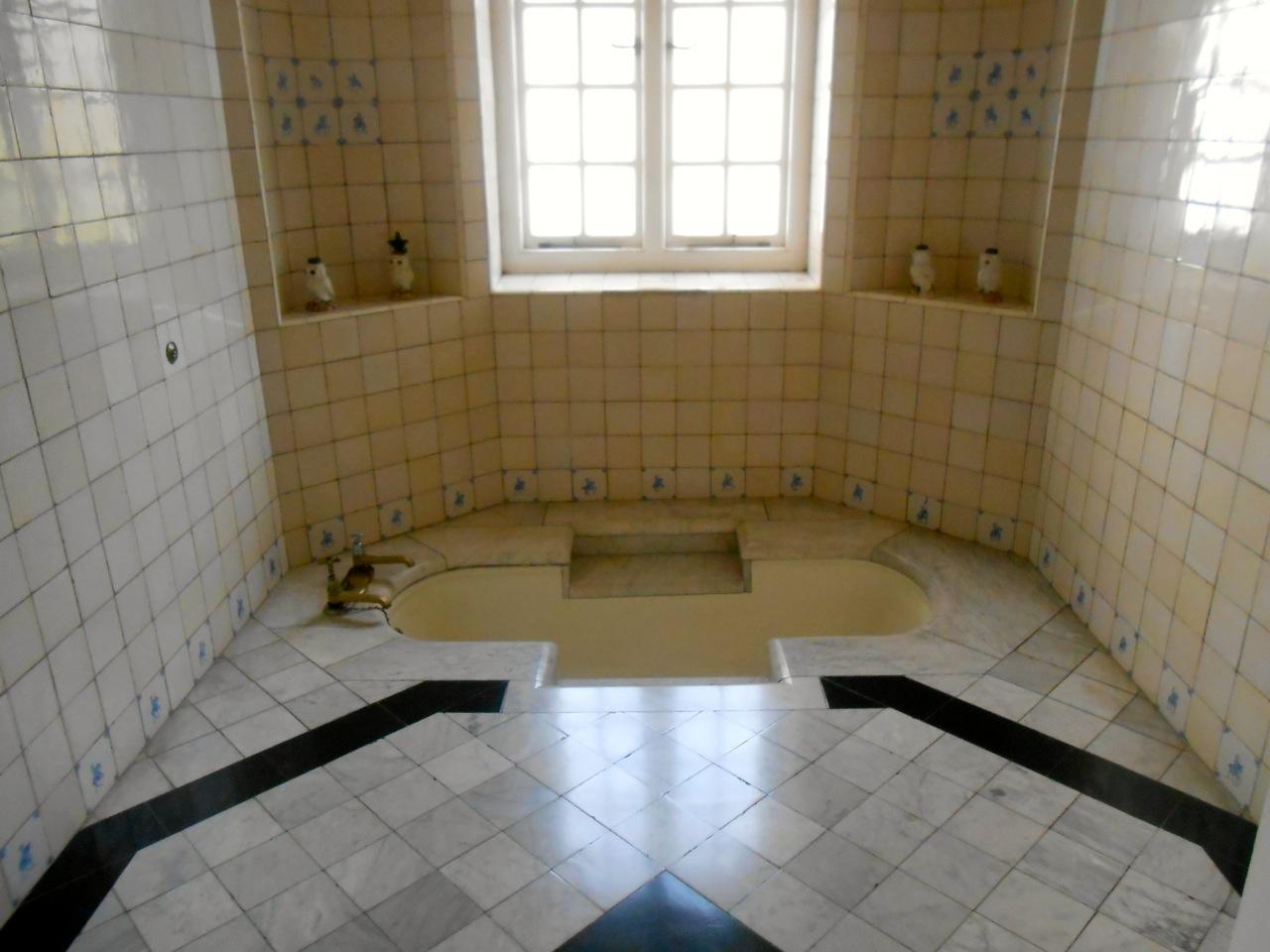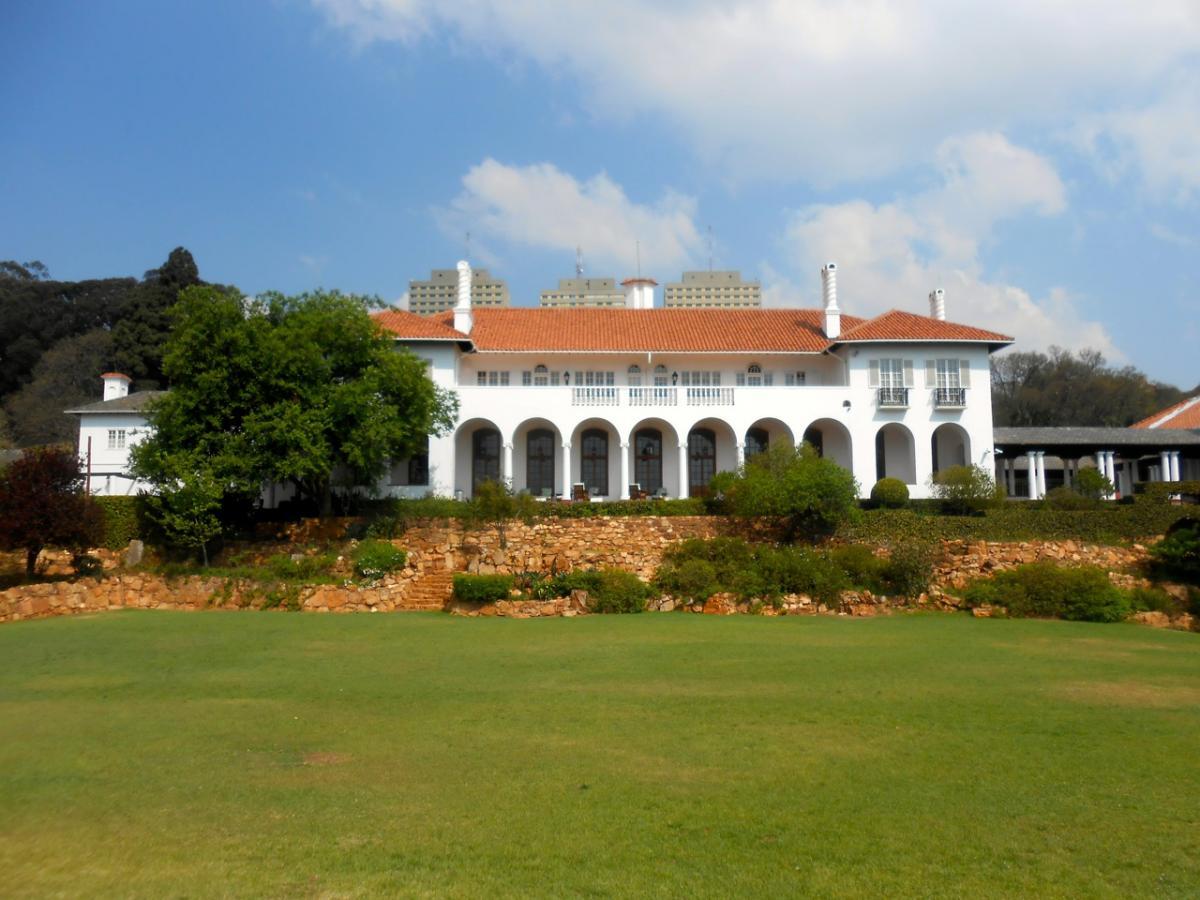
Disclaimer: Any views expressed by individuals and organisations are their own and do not in any way represent the views of The Heritage Portal. If you find any mistakes or historical inaccuracies, please contact the editor.
The wonderful article below, written by journalist Lucille Davie, looks at the history and preservation of one of Joburg's grandest historic mansions. The piece first first appeared on the City of Johannesburg's website on 23 March 2004. Click here to view more of Davie's work.
Lionel Phillips would surely approve of the new developments at his former mansion, Villa Arcadia, in Parktown. The house and property of 16 acres of prime real estate has been bought by Hollard Insurance and is to be developed into their future office complex with a careful balance between heritage and modern use.
And in the process, the mansion, designed by Herbert Baker, and believed to be his practice run for the Union Buildings in Pretoria, is to be saved from almost certain destruction.
A landmark historic mansion (The Heritage Portal)
Construction has begun, and residents would have noticed a large sandy scar and earth movers at the entrance to the mansion, on Oxford Road. Hollard expects to move into their new offices in October 2005.
Phillips, a wealthy Randlord and chairman of the influential Central Mining & Investment Corporation and president of the Chamber of Mines, moved with his family between England and Johannesburg between the early 1890s and 1914, in all living in the city for 12 years. He was a civic-minded person, fostering a spirit of public-mindedness in the companies he controlled.
His contribution was wide-ranging: he revived the Witwatersrand Agricultural Society, serving as its president from 1906 to 1924; he was the first president of the Council of Education in the Transvaal, formed in 1895; he played a prominent role in the establishment of the University of Cape Town; he was a founder trustee of the Johannesburg Art Gallery, contributing seven significant paintings and a Rodin sculpture to the collection; he was instrumental in establishing the Kirstenbosch gardens in Cape Town; and he made generous donations to a range of charitable and religious institutions.
Johannesburg Art Gallery (The Heritage Portal)
He also cared for the little things: he paid for the installation of a chamber organ at St Aidan’s Church in Yeoville, still in place; he sponsored the 30-year research and writing of The Flora of South Africa by Rudolf Marloth; and he paid for the beautiful Angel of Peace sculpture erected on the top of the Rand Regiments Memorial in Saxonwold.
Rand Regiments / South African War Memorial (The Heritage Portal)
Villa Arcadia was built in 1910 for Phillips and his wife, Florence. It’s not the first Arcadia. In 1906 the Phillipses, on their return from England where Lionel had fled after paying a fine of £25 000, the penalty for being involved in the Jameson Raid of 1896, and for which he originally got the death sentence, acquired the original Arcadia.
The first Arcadia, believed to have been built in the late 1890s when Parktown was first laid out, was a compact Victorian villa with Swiss trimmings, in particular overhanging roof edges. The Phillipses, being part of the busy socialite set, soon realised that the house was too small for lavish entertaining, so commissioned Baker to design a house for them.
Villa Arcadia
Arcadia is a beautiful house, built as a Mediterranean villa, finished in Baker’s trademark stone baselines and tall chimneys. It has a number of large reception rooms with beautiful finishes, bedrooms, some en suite, children’s rooms and nursery, a library/music room, a delightful courtyard or cloister, a large service wing, a coach house and stables, and quarters for the gardeners. The house is finished off with a wonderful loggia or long stoep facing the northern suburbs. The gardens consisted of two orchards, a swimming pool, a rose garden, and a tennis court.
Chimneys at Villa Arcadia (The Heritage Portal)
Villa Arcadia's long stoep (The Heritage Portal)
In front of the house were beautiful terraced gardens. The ridge at the back was left natural, and planted with wattles.
Arcadia boasts fine craftsmanship, like brass work done by George Ness, and beautifully carved rococo fanlights above each double door, by Anton van Wouw.
After living in the house for four years, the Phillipses moved to London in 1914. He retired in 1924 and they returned to South Africa. Meantime, in 1917 Florence bought the Willem Adriaan van der Stel estate of Vergelegen in Somerset West in the Western Cape, where they lived until their deaths. Both are buried at the Brixton Cemetery in Johannesburg.
Vergelegen depicted by Van der Stel (Restorica 1994)
Arcadia sold
In 1922 they sold Villa Arcadia to the South African Jewish Orphanage (SAJO), and for 81 years it remained an orphanage, with several additions – a hospital called the Max and Dora Friedman Cottage (1929), a dormitory block called the Joe Lewis Wing (1933), an annex to the house (1934), designed as a dormitory, an ablution block (circa 1950), a modern-style secretary’s house (circa 1960). In 1977 the then National Monuments Council approached them with a view to declaring the property a national monument. However, the orphanage turned down the proposal, fearing it would hinder future development of the property.
By 2001 the number of children at the home had dwindled to 15, and these children were moved to a new home in Raedene, a largely Jewish suburb. The option of selling the home was being considered by the SAJO. A final gesture of closure happened in July 2002 when the contents of the home were auctioned. In 2003 the SAJO sold Villa Arcadia to Hollard.
Some 2 000 children had enjoyed what Arcadia offered: beautiful surroundings and a wonderful home, in addition to caring staff.
Plaque commemorating the 'Ochberg Orphans' (The Heritage Portal)
Hollard development
Although the house is not a national monument, it is more than 60 years old, which means that permission has to be obtained for alterations or demolitions of any of the buildings on the site. Hollard was required to submit a Site Development Plan (SDP) to the Provincial Heritage Resources Authority Gauteng (PHRAG) and the Parktown Association, for approval. They commissioned a conservation management plan, also submitted to the PHRAG.
The SDP was to consider the historical significance of the existing buildings, the architectural suitability of the new buildings, and the landscaping of the site to enhance the new and old buildings, among other things.
Permission was granted for four buildings to be demolished – the annex, the Joe Lewis Wing, the secretary’s house, and garages near the coach house and stables. First to go has been the annex. A row of mature palm trees has been uprooted and salvaged, to be replanted later.
The major part of the new development takes place west of the house, and although it will have two levels of parking and three levels of offices, it will not protrude above the roof of the mansion or disturb the view from the mansion’s elegant stoep – the upper storey will be in line with the ground floor of Arcadia. To this end there’ll be no developments in front of the house.
View of Westcliff from Villa Arcadia (The Heritage Portal)
View towards Rosebank from the stoep (The Heritage Portal)
Says Justus van der Hoven, director of architectural firm ARV, one of the contractors assigned to the development: “The new complex will not compete with the house.” In fact the object is to show that it is a modern structure.
These 12 000m² offices will house up to 1 200 workers, built in two blocks separated by an atrium and amphitheatre. The finish on the buildings will be different but harmonious and in keeping with the main house. The smooth plastered finish will be painted an earthy cream colour and finished with struts of local stone, matching the stone finishes of Arcadia. The roof will consist of grey slate.
The completed complex via google maps
The offices will have maximum window space, running from ground to third floor, and facing northwards.
Van der Hoven stresses: “The important thing is to maximise the on site view.” One of the reasons for the Randlords building homes in Parktown was to capture the magnificent view, on a clear day right to the Magaliesberg mountains to the north-west.
One thing that could spoil this great view is the M1 freeway and its noisy traffic, bordering on the west of the property. But the developers and Hollard have catered for this. An acoustic engineer has been brought in; the result is thick laminated glass that will cut out most of the noise, as well as offering protection against the harsh highveld sun.
South of the sweeping, jacaranda-lined driveway off Oxford Road will be a three-storey 300-car garage, surrounded by the rocky ridge and wattles. Originally, says Van der Hoven, on-street parking had been planned along the northern edge of the site, but it was felt that this would detract from the view. Instead the parking garage, which was originally going to be a flat, treed space for 120 cars, will now cater for 300 cars. Trees will be planted along the northern road, leading from the new entrance off Federation Road to the complex. The old entrance off Oxford Road will remain but will in future contain traffic lights.
The developers also have permission to build on a site east of the mansion, but for the moment this will not be developed.
Jacaranda-lined driveway (The Heritage Portal)
Restoration of Arcadia
Villa Arcadia is to be restored, and enhanced in small ways. A single-storey addition to the north-east corner of the house is to be removed as it detracts from the original design of the house. A passenger lift in an alcove off the entrance hall is to be installed. A new stair link is to be installed between the cloister and the lower ground floor, where new toilet facilities are to be built.
The enclosure of the first floor balcony at the entrance to the house is to be removed, restoring the attractive balcony. Two pairs of adjoining bedrooms on the first floor are to be integrated to form two large training rooms. The former synagogue (the converted music room) will be converted into an audio-visual room. A commemoration room in the service wing is to be created, where all the accumulated plaques and commemoration panels are to reside. The whole house will be rewired to accommodate its new uses. An internet café is to be considered for the former study.
The Villa Arcadia balcony (The Heritage Portal)
There’ll be a whole series of minor repairs: chimneys, facades, the roof, gutters and downpipes, the removal of anthracite heaters, repairs to fireplaces, and the installation of appropriate light fittings.
The expanse of space south of Arcadia up the steep ridge will, over a period of some 20 years, be denuded of its black wattles and gum trees, and be replaced with indigenous acacias and proteas. There’s likely to be a jogging and walking track placed in among the trees.
The terraced gardens and retaining walls are protected, so they will simply be repaired and restored. Below them and moving west to the new structure, a meadow-type garden with lawns, scattered trees, flower beds and pathways will be established.
Vibrant site
Van der Hoven is very excited about the development. “This is a vibrant site that offers the best views in town, despite the noise from the freeway. It’s significant that Hollard wants to move from the suburbs, they’re one of the players in the general move back into town.”
View from the balcony (The Heritage Portal)
He says they are very sensitive to the fact that the site has several layers of history. “We are trying to build history into the complex while at the same time bringing in new life to the site.”
Nick Swart, Hollard’s group property and facilities manager, summed up Hollard’s feeling about the heritage site: “Hollard has heart and this home has heart.”
Hollard looked at several sites around the CBD and Sandton, mostly modern, move-right-in-and-continue-with-business sites, but rejected them all. But when CEO Paolo Cavalieri saw Arcadia, says Van der Hoven, he “fell in love with it”.
Van der Hoven says that the development has the enthusiastic backing of the City, and Hollard has made a “special effort” to engage with Flo Bird, head of the Parktown & Westcliff Heritage Trust, and the PHRAG, both custodians of the city’s heritage.
Bird said of the development: “I was pleased when Hollard came in, they look after their buildings in town well. They have shown an exemplary commitment to caring for the property.”
The total development cost comes in at R120-million.
Hollard’s motto is “With Hollard it’s sorted”. Looks like they’re sorted on this one.
The famous Villa Arcadia bathroom (The Heritage Portal)
Leave the stove
Johannesburg is unique in the country in that when houses are sold, the previous owners are obliged to leave their stove for the future owners. When the Phillipses sold the property to the SAJO in 1922, they planned to move some of their favourite features like the wrought-iron ornamental gate, the organ, the garden statuary, and the Venetian well-head in the cloister.
The SAJO went to court to prevent them taking these items, and according to the architect Justus van der Hoven, also the stove, probably a large coal stove with a chimney. The court ruled that the Phillipses had no right to take fixed items, and the tradition of leaving the stove in the former Transvaal was born, still in place now more than 80 years later.
Lucille Davie has for many years written about Jozi people and places, as well as the city's history and heritage. Take a look at lucilledavie.co.za
Comments will load below. If for any reason none appear click here for some troubleshooting tips. If you would like to post a comment and need instructions click here.

